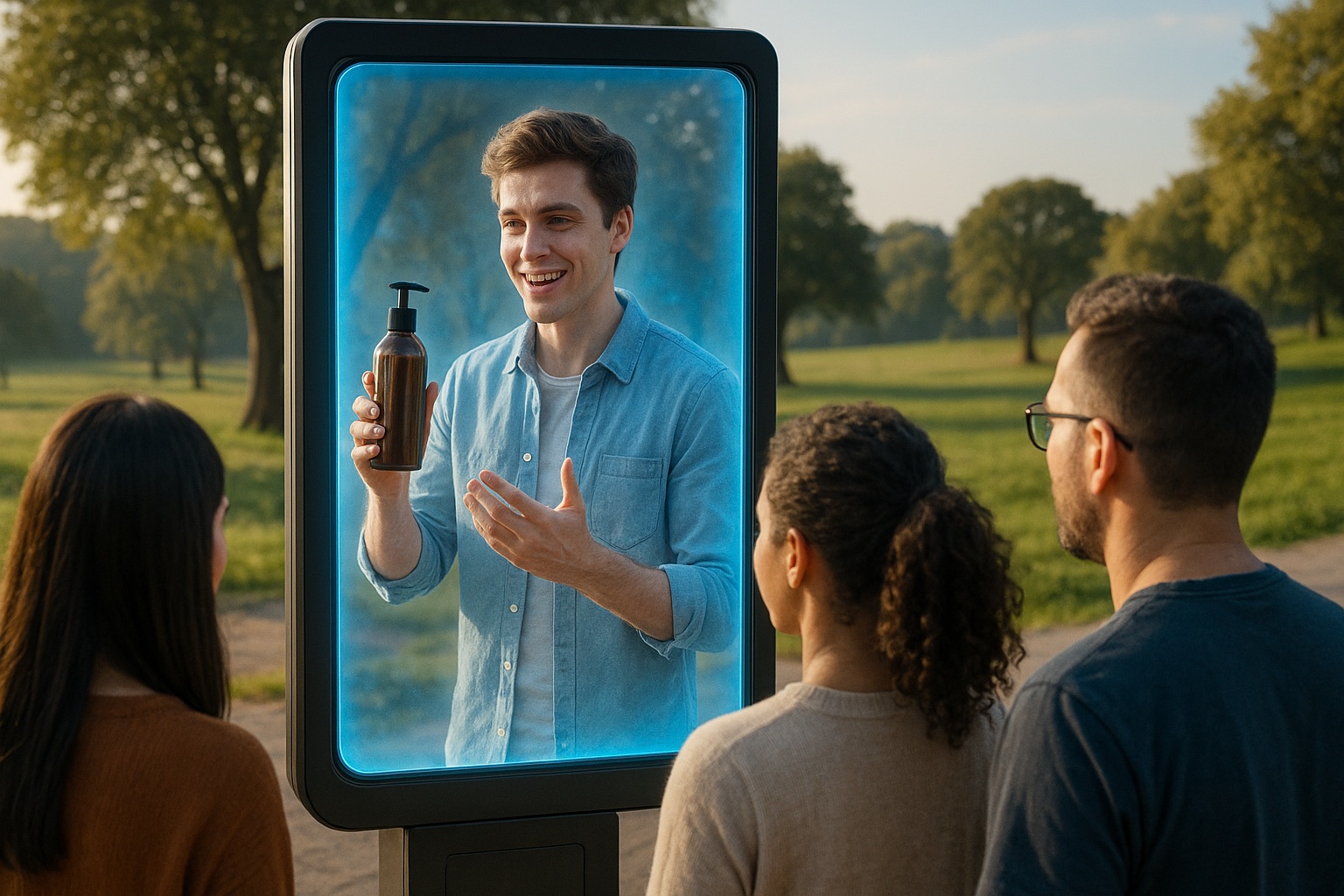Search Engine Results Pages (SERPs) serve as the primary gateways through which users interact with content on the web. Every click on a search result is the culmination of a rapid yet complex decision-making process influenced by numerous cognitive and emotional cues. While traditional click-through rate (CTR) optimisation has relied on factors like keyword relevance and snippet structure, a deeper, physiological layer of insight is emerging—pupil response data.
By examining how users’ pupils respond to different elements on a SERP, marketers, UX designers, and search engineers can gain granular insights into user attention, emotional engagement, and cognitive load. This article examines the significance of pupil response data in SERP click optimisation, the underlying science, data collection methods, and how these insights are transforming our understanding and enhancement of user interactions with search engines.
Understanding Pupil Response Data
Pupil response data refers to the measurement of changes in the diameter of a user’s pupils during interactions with visual stimuli. These changes, known as pupil dilation and constriction, can occur due to variations in light, but more importantly, due to internal psychological and cognitive factors such as interest, emotional arousal, or mental workload.
In SERP contexts, these physiological signals serve as indicators of where users direct their focus, what captures their interest, and what requires their cognitive effort.
Eye-Tracking and Pupilometry
To extract pupil response data, researchers use eye-tracking technology—specialised hardware and software that simultaneously tracks:
- Fixations (where users look),
- Saccades (how their gaze moves),
- Pupil diameter over time.
These tools not only map visual attention across the SERP but also correlate that attention with emotional and cognitive responses. By synchronising eye-tracking metrics with on-screen content, it becomes possible to assess how specific search results affect user engagement.
Why Is Pupil Response Relevant for SERPs?
Unlike traditional analytics (like clicks or time-on-page), pupil response data taps directly into the user’s physiological experience. This allows optimisation efforts to be proactive, shaping SERPs not only based on what users clicked, but based on why they were drawn to certain results.
Key Psychological Indicators:
- Cognitive Load: Larger pupils indicate a higher cognitive workload, often when users are analysing or comparing results.
- Emotional Engagement: Pupil dilation may spike when users encounter information that is exciting, confusing, or highly relevant.
- Decision-Making Cues: Variations in pupil size just before a click suggest intense evaluation or decisiveness.
In effect, pupil response becomes a biometric proxy for the user’s mental and emotional states, providing context that traditional metrics miss.
Research Insights: Pupil Dilation and SERP Interactions
Numerous studies in human-computer interaction (HCI) and cognitive science have investigated the correlation between pupil dilation and decision-making processes on search engine results pages (SERPs).
Key Findings:
- Initial Fixation Bias: Users often show strong pupil dilation when viewing the first one or two results. This supports the idea that early SERP placements not only gain more attention but may also demand more mental effort for evaluation.
- Snippet Evaluation: Pupil dilation tends to increase when users engage with complex or intriguing snippets. This helps identify which meta descriptions or titles are cognitively stimulating.
- Drop-off Effect: Pupil response often wanes after viewing the top few results, suggesting that cognitive engagement decreases as users scroll—useful for optimising lower-ranked results to recapture attention.
Application of Pupil Response Data in SERP Optimisation
1. Snippet Optimisation
Eye-tracking studies show that snippets act as decision gateways. By measuring pupil dilation during snippet evaluation, marketers can:
- Identify which language patterns or keywords increase engagement.
- Refine meta descriptions to reduce cognitive overload.
- Highlight emotionally charged words that generate strong engagement.
Optimisation Strategy:
Use compelling language that balances clarity and intrigue. Avoid information overload—test snippets for readability and emotional resonance.
2. Ad Placement and Visual Design
Ads placed within or alongside SERPs can benefit greatly from understanding where users are naturally drawn to and how their eyes respond.
- Pupil data reveals ad fatigue when overused or poorly placed.
- Emotional spikes can indicate when an ad’s message resonates—even if the user doesn’t click immediately.
Optimisation Strategy:
Leverage pupil data to reposition ads where natural visual flow and emotional response align. Use design contrast subtly to enhance visibility without causing strain.
3. Featured Content Optimisation
Elements like featured snippets, knowledge panels, and the “People Also Ask” section draw mixed reactions. Pupil response can help discern which types:
- Drive engagement through useful summaries.
- Causes confusion due to overload or ambiguity.
Optimisation Strategy:
Ensure that featured content is concise, directly relevant, and addresses common intent paths. Use structured formats, such as bullet points or Q&A, for easier processing.
4. Keyword Intent Analysis
Search queries can be categorised by informational, navigational, or transactional intent. Pupil response helps map how users emotionally and cognitively react to results tailored to each intent type.
- Informational queries often result in a higher cognitive load.
- Transactional searches may elicit quicker pupil dilation due to the urgency or emotional investment involved.
Optimisation Strategy:
Segment keyword strategies by emotional-cognitive profiles. Use heatmaps and dilation data to align SERP content with likely user intent.
5. Site Structure and Sitelink Optimisation
Pupil data can indicate how users visually parse sitelinks and site architecture from the SERP.
- Which sitelinks get noticed first?
- Where does cognitive strain appear when multiple links are present?
Optimisation Strategy:
Organise sitelinks for quick scannability. Use succinct, high-relevance anchors. Ensure clarity in naming conventions to reduce hesitation or confusion.
Real-Time Personalisation Possibilities
In the future, adaptive SERPs could use real-time biometric feedback, including pupil dilation, to personalise result rankings and display. For instance:
- If a user consistently shows strong engagement with list-based content, SERPs could prioritise those formats.
- Real-time feedback might influence which ad is shown next.
While such applications require consideration of privacy and ethics, their technical feasibility is growing rapidly.
Summary Table: How Pupil Data Enhances SERP Elements
| SERP Feature | Insight from Pupil Data | Optimisation Approach |
| Snippets | Dilation = intrigue, interest | Use engaging yet clear language |
| Ads | Emotional spikes = resonance | Refine design and messaging based on gaze response |
| Featured Snippets | High load = cognitive strain | Simplify layout; match exact user intent |
| Keyword Categories | Intent-matching via engagement patterns | Group and tailor results by behavioural profile |
| Sitelinks | Visual confusion or clarity | Prioritise logical, scannable structures |
Enhancing UX and A/B Testing with Pupil Metrics
While most marketers rely on A/B testing based on click-through rate (CTR) or bounce rate, incorporating pupil response data adds a powerful new layer of insight. Instead of merely testing which version performs better after the click, businesses can now test which version draws better cognitive and emotional engagement before any interaction occurs.
Eye-Tracking & Pupil Data in UX A/B Testing
With pupil response data integrated into UX testing protocols, developers and marketers can:
- Detect emotional friction points in real-time.
- Identify content that is visually or cognitively overwhelming.
- Understand which design variations prompt faster decision-making.
For example, if a particular layout causes greater pupil dilation across multiple users, it could indicate either high engagement or unnecessary complexity. Contextual analysis, when paired with gaze paths and click behaviour, can help interpret the data accurately.
Iterative Improvements Based on Biological Feedback
Unlike heatmaps alone, which indicate where users are looking, pupil response data reveals how deeply they’re processing the content they’re viewing. This leads to more informed iterations.
Optimisation Loop Example:
- A/B Test 2 snippet designs.
- Collect click data + pupil dilation responses.
- If Version A yields stronger engagement with lower cognitive strain (moderate pupil dilation and higher click-through rates), it becomes the base.
- New variations evolve from Version A with continued refinement.
Emotional Design in SERPs
Emotional design in user interfaces has been widely adopted in app and web development, but it’s now making inroads in search experience design. Understanding user emotional responses to different SERP elements enables better alignment of search results with emotional intent, particularly for transactional or health-related queries, where user stress or urgency is high.
Detecting Emotional Triggers in SERPs
Pupil response data can help uncover:
- Which words or visuals cause emotional spikes
- Where emotional drop-offs occur that may lead to a bounce
- Whether emotionally engaging results correlate with positive user behaviour (like clicks, conversions, or time spent).
Use Case Example:
In health-related searches, the use of empathetic language and reassuring phrasing in snippet titles and descriptions may evoke comfort, leading to greater pupil dilation and higher click rates.
Emotional Relevance and Trust
Emotionally resonant results are also often more trustworthy in the eyes of the user. Users subconsciously gauge relevance not just with their rational brain, but also with their emotional system—something that pupil data can now begin to quantify.
Ethical Considerations and Data Privacy
As powerful as pupil response data is, it also introduces new ethical and privacy concerns. Since pupil dilation reveals subconscious states, such as stress, confusion, or emotional arousal, it constitutes sensitive biometric data.
Key Ethical Considerations:
- Informed Consent: Users must be aware that their pupil data is being collected and understand how it will be used.
- Data Anonymisation: Pupil data should be stripped of personal identifiers before being stored or analysed.
- Purpose Limitation: Data use should be narrowly defined—for optimisation purposes only, not behavioural manipulation.
As technology progresses, maintaining transparency and user agency is crucial. Future adoption of these technologies in commercial SERP platforms should prioritise privacy-respecting architecture.
Comparing Pupil Response to Traditional Metrics
| Metric | What It Measures | Limitation | Pupil Response Advantage |
| Click-Through Rate | Actual user action (clicks) | Misses intent or hesitation | Captures pre-click emotional & cognitive state |
| Bounce Rate | Single-page session exits | Doesn’t reveal why the user left | Pupil response shows engagement level before exit |
| Dwell Time | The time the user spends on the result | Doesn’t always indicate satisfaction | Pupil dilation tracks the initial reaction, before the click |
| Scroll Depth | How far the user scrolls on the SERP or the site | Passive behaviour; no engagement metric | Dilation shows real-time engagement or confusion |
Using pupil response in tandem with these traditional metrics provides a 360-degree view of user behaviour, elevating optimisation to a biometrically informed discipline.
Use Cases: Where Pupil Response Optimisation Excels
1. E-Commerce Queries
In searches with commercial intent (“best smartphones 2025” or “cheap flights to Tokyo”), SERPs are highly competitive and rich in information.
- Pupil response data identifies the most emotionally engaging product listings or price highlights.
- Brands can position emotionally resonant language in meta titles and descriptions to attract user focus.
2. Local Services & Google Map Packs
For queries like “best Italian restaurant near me,” users rely on:
- Ratings
- Distance
- Snippet descriptions
Eye-tracking with pupil dilation reveals what combination of elements (e.g., 4.9 stars + short walk = spike in pupil engagement) triggers clicks.
3. Healthcare and Legal Information
Here, emotional sensitivity is high, and trust signals become critical.
- SERPs optimised with reassuring, clear, and emotionally affirming content can capture more attention.
- Pupil dilation highlights which phrases users find comforting or confusing.
Future of Pupil Response in Search
As AI, personalisation, and biometric sensors evolve, we can expect pupil response data to become part of adaptive search interfaces that respond dynamically to user states.
Potential Developments:
- Emotion-adaptive SERPs: SERPs that adjust in real time to user attention and engagement.
- AR/VR search integration: In immersive environments, pupil and gaze tracking may become standard tools for interaction.
- Personalised result styling: Font size, result layout, and snippet tone could vary by user engagement profile over time.
While we’re not there yet, the foundation is already being laid by pupil-informed design principles.
Final Thoughts: Why It Matters
Traditional click data only tells part of the story. Pupil response data allows us to look beneath the surface of user behaviour—into the very mental and emotional processes that drive decision-making on SERPs.
By harnessing this biometric feedback, marketers, UX professionals, and search platforms can:
- Refine snippet content with scientific precision.
- Personalise user experiences without relying solely on past behaviour.
- Create emotionally intelligent search results that truly resonate.
In a digital world where every second of attention is contested, understanding what captures the eye and engages the mind is no longer a luxury—it’s a necessity. And pupil response data is a game-changing tool for that understanding.
Complete Summary Table: Pupil Response Data in SERP Optimisation
| Aspect | What Pupil Data Reveals | How It Improves SERPs |
| Attention | Dilated pupils = high attention focus | Highlight results, drawing the most natural user attention |
| Cognitive Load | Larger pupils = more mental effort | Simplify content causing cognitive strain |
| Emotional Engagement | Dilation during emotional arousal | Use emotionally compelling titles/descriptions |
| Decision Points | Spikes before clicks = intense evaluation | Focus on persuasive phrasing during key decision points |
| Snippet Effectiveness | Where users pause and engage | Test language, format, and readability |
| Ad Optimization | Placement and message impact | Adjust ad strategy for resonance, not just visibility |
| Personalisation | Patterns across sessions | Tailor SERPs to cognitive-emotional profiles |
| UX Design | What frustrates or comforts users | Create calm, intuitive layouts |
Conclusion
Pupil response data represents a frontier in SERP click optimisation that merges neuroscience, behavioural analysis, and user-centred design. By interpreting how users’ pupils react during their SERP journeys, we gain unprecedented visibility into why they click, not just what they click.
Incorporating this data into SEO strategies, content development, and SERP design leads to richer, more engaging, and more effective search experiences. As eye-tracking and biometric tools become more accessible, integrating pupil response data will likely become standard practice in the next generation of search engine optimisation.






